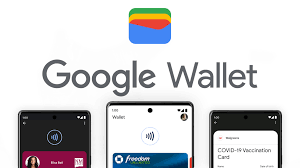Google Wallet is now available in South Africa, the company’s most popular online payment service. This made South Africa the first country in Africa to get this service.
When it first became accessible in July, the app could only be downloaded in 39 nations. The number of nations supported by the service has increased to 45, with South Africa being one of the six recently added countries.
What is Google Wallet?
Google Wallet enables users to make payments and send money directly from their Android phones and smartwatches using its mobile payment system. It functions as a digital wallet for mobile payments. Users can now use the app for more than simply making purchases; thanks to a new update, they can also use it as a boarding pass for an aeroplane, a pass to an event, a COVID-19 immunization card, and a remote for their car.
People in South Africa who have a Google Wallet account will soon be able to store and retrieve boarding passes, loyalty cards, and payment cards through the platform. Over time, support for more and more goods will be added.
“Access to technology is vital for economic prosperity as millions of people use their mobile devices to tap and pay at stores, pay for public transportation, and utilise a variety of passes,” says Alistair Mokoena, Google SA’s country director.
“Our goal is to give everyone access to digital wallets by creating a dynamic ecosystem of manufacturers, developers, and users,”
Read also: Google’s Africa Investment Fund Invests in Lori Systems
How to Make Payments Using Google Wallet
According to the corporation, using Google Wallet is a straightforward process. Suppose a user already has a credit or debit card saved to their Google account. In that case, that card’s information will be imported into Google Wallet right away.
At this point, they must follow the on-screen instructions to set it up for contactless payments.
Users who do not currently have a card saved but would like to add a new card to their Wallet can do so by selecting the “Add a card”prompt, located in the carousel at the top of the Wallet app page. After that, they will be asked to read and agree to the terms and conditions set by the card issuer before they can use the new card.
After their card information is accepted and verified, their cards will be tokenised and ready for usage in Google Wallet. After that, they will be able to use them to tap and pay at checkout in stores and pay online wherever the Google Pay or contactless icon is shown.
It is just as easy to add digital objects to Google Wallet, such as boarding passes, and it usually only takes a few clicks to accomplish this task. For instance, when a user has finished purchasing a flight on an airline’s website, they will see a button labelled “Add to Google Wallet.” Clicking that button will cause the digital version of the item to be created in the user’s wallet.
“Security and privacy are built into every part of Google Wallet, making payments safer and allowing people to transact seamlessly and confidently throughout the day.” This is the most important aspect of Google Wallet. ” This will make it possible for customers to complete transactions by using a virtual card number, often known as a token,” Mokoena explains.
“We couldn’t be more thrilled to announce that Google Wallet is now available in South Africa.” Mokoena summarises, “We hope people will appreciate how simple it is to use but also how secure it is for them to transact their business confidently.”
Which devices are compatible with this feature and which are not?
MyBroadband says that the service will work on most Android devices that support Near Field Communications (NFC) and Host Card Emulation (HCE), including the newest Android phones running version 5.0 or later of Android. The U.S. government has blocked most Huawei handsets released in the past few years from accessing Google Mobile Services (GMS), so you won’t be able to use the app on one of those phones.
On the other hand, tap-to-pay is unavailable on iOS devices, even though the Google Wallet app stores cards.
In addition, Wear OS smartwatches in these new territories do not have access to Google Wallet, so customers will have to stick to using their phones for all of their mobile payment and other use case needs.
Banks’ Google wallet works with
Cardholders of FirstRand Bank, Discovery Bank, Investec, Standard Bank, ABSA, and Nedbank will be able to add their cards to Google Wallet starting today. This will let them pay wherever contactless payments are accepted with their Android phones or Wear OS devices. Nedbank cardholders will not be able to add their cards (in-store, in apps or on the web).




